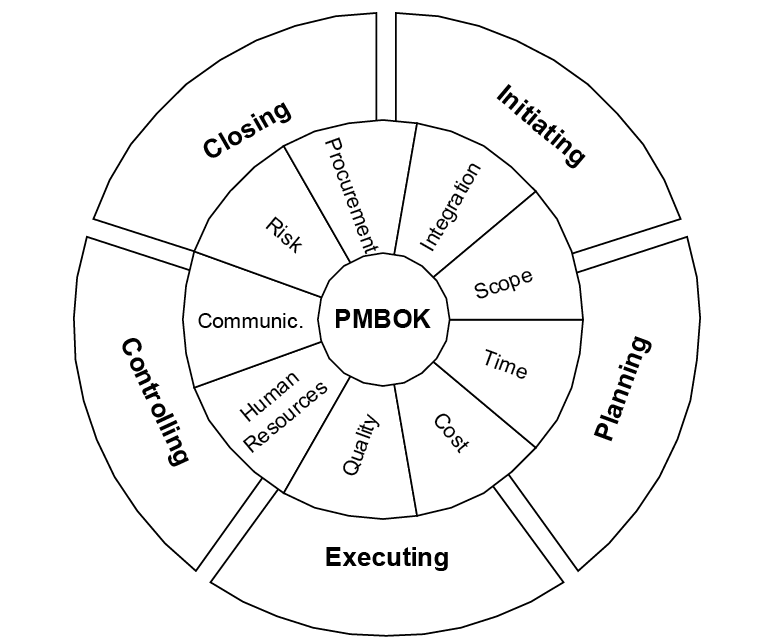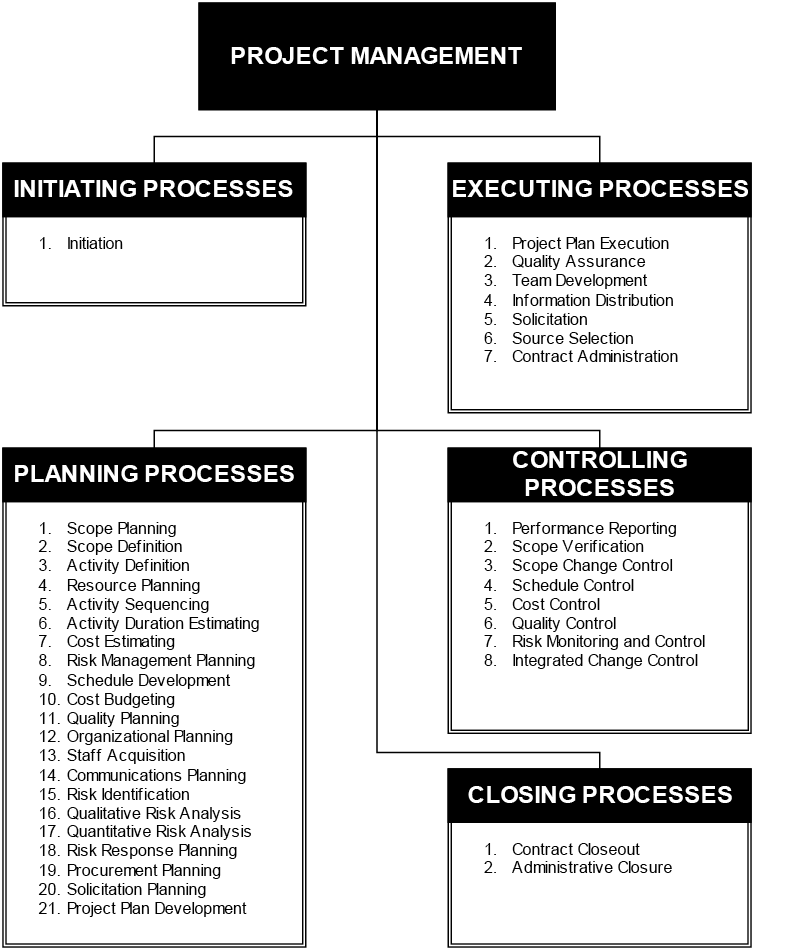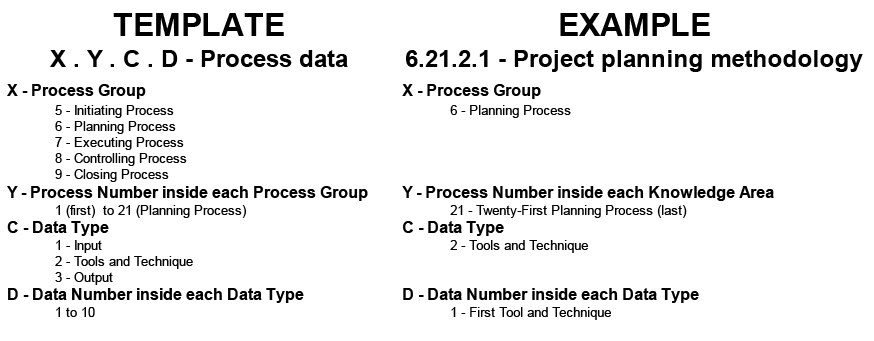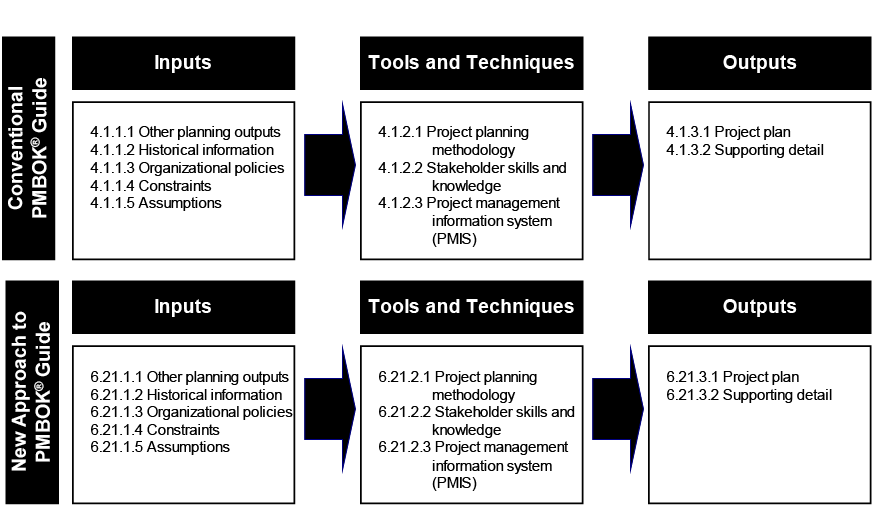A New Approach to PMBOK® Guide 2000
Publications
PMI Global Congress 2001 North America
Nashville – Tennessee – USA - 2001
Abstract
This work puts forward a new approach to PMBOK® Guide in which the thirty-nine processes are organized in five groups: initiation, planning, executing, controlling and closing process. This arrangement suggests a chronologically structured, more didactic view, which has been successfully tested in two PM classes in Brazil, instead of the former organization in nine Knowledge Areas. This approach is also useful to PMP exam preparation where two hundred questions are divided into process groups rather than knowledge areas.
PMBOK® GUIDE 2000
The PMBOK® Guide is nowadays the most important reference document about the Project Management Body of Knowledge. It was defined in 1987 as “all those topics, subject areas and intellectual processes which are involved in the application of sound management principles to … projects”. The guide is distributed by PMI, free of charge, with more than 640,000 copies placed in circulation worldwide (March 2001). As established in the guide, “the primary purpose of this document is to identify and describe that subset of the PMBOK® which is generally accepted. Generally accepted means that the knowledge and practices described are applicable to most projects of the time, and that there is widespread consensus about their value and usefulness” (PMBOK® Guide, 2000 Edition). According to the purpose of the guide, it is essential to have a logical and coherent organization directly aimed at the process groups in order to facilitate the understanding of the chronology of Project Management processes (Exhibit 01). However, it does not mean that the knowledge areas should be considered of less importance, as they are crucial for the understanding of the multidisciplinary mechanisms related to project management.

Exhibit 1 – PMBOK® based on knowledge areas as opposed to PMBOK® based on processes groups.
Project management process groups
The PMBOK® Guide organizes the Project Management Processes in five groups: initiating processes, planning processes, executing processes, controlling processes and closing processes. All thirty-nine processes are divided into these five groups and intertwined by the results that they achieve (Exhibit 02). The fact that the five process groups are also interlinked creates a dynamic net of processes that are repeated and combined in each phase of the project , and consequently originates a process which is not discrete and overlaps itself in different phases and levels of the project.

Exhibit 2 – Thirty-nine processes divided into five groups.
New structture of PMBOK® Guide
The PMBOK® Guide suggested here redefines and reorders the processes in new chapter groups. The first two chapters of part 1 (The Project Management Framework) are unchanged. A chapter 3 is now built from the introductions of the nine chapters of the second part, relating each of the knowledge areas and its principal processes, without detailing any process. The previous chapter 3, which describes the processes of administration, will now be chapter 4 and will be in the second part of the guide called “The Project Management Process Groups”. All thirty-nine processes will have now been distributed in agreement with the phases of the project in which they are used.
The greatest change would be to place the introductory chapters of each knowledge area in a third chapter which gives an overall view of all the processes within each area. The former chapter 3 then becomes chapter 4, providing details about Project Management process groups. However, the specification of each process group (initiating, planning, executing, controlling and closing), which used to be denominated 3.3.X, becomes the introduction of chapters 5 to 9. The new table of contents is systematized below:
Section I – The Project Management Framework
Chapter 1 Introduction
1.1. Purpose of This Guide
1.2. What is a Project?
1.3. What is Project Management?
1.4. Relationship to Other Management Disciplines
1.5. Related Endeavors
Chapter 2 Project Management Context
2.1. Project Phases and the Project Live Cycle
2.2. Project Stakeholders
2.3. Organizational Influences
2.4. Key General Management Skills
2.5. Social-Economic-Environmental Influences
Chapter 3 Project Management Knowledge Areas
3.1. Project Integration Management
3.2. Project Scope Management
3.3. Project Time Management
3.4. Project Cost Management
3.5. Project Quality Management
3.6. Project Human Resource Management
3.7. Project Communications Management
3.8. Project Risk Management
3.9. Project Procurement Management
Section II – The Project Management Process Groups
Chapter 4 Project Management Process
4.1. Project Processes
4.2. Process Groups
4.3. Process Interactions (introduction only)
4.4. Customizing Process Interactions
4.5. Mapping of Project Management Process
Chapter 5 Initiating Process
5.1. Initiation
Chapter 6 Planning Process
6.1. Scope Planning
6.2. Scope Definition
6.3. Activity Definition
6.4. Resource Planning
6.5. Activity Sequencing
6.6. Activity Duration Estimating
6.7. Cost Estimating
6.8. Risk Management Planning
6.9. Schedule Development
6.10. Cost Budgeting
6.11. Quality Planning
6.12. Organizational Planning
6.13. Staff Acquisition
6.14. Communications Planning
6.15. Risk Identification
6.16. Qualitative Risk Analysis
6.17. Quantitative Risk Analysis
6.18. Risk Response Planning
6.19. Procurement Planning
6.20. Solicitation Planning
6.21. Project Plan Development
Chapter 7 Executing Process
7.1. Project Plan Execution
7.2. Quality Assurance
7.3. Team Development
7.4. Information Distribution
7.5. Solicitation
7.6. Source Selection
7.7. Contract Administration
Chapter 8 Controlling Process
8.1. Performance Reporting
8.2. Scope Verification
8.3. Scope Change Control
8.4. Schedule Control
8.5. Cost Control
8.6. Quality Control
8.7. Risk Monitoring and Control
8.8. Integrated Change Control
Chapter 9 Closing Process
9.1. Contract Closeout
9.2. Administrative Closure
Section III – Appendices
Section IV – Glossary and Index
With this table of contents a new PMBOK® can easily be built beginning with the reordering of the conventional processes without losing any part of the original, that is, without the omission of any of the original content.
Process interactions
the Integration Process “Project Plan Development” denominated “Project planning methodology”.
All 39 processes are linked by their inputs and outputs. In the New Approach to PMBOK® Guide the system for numbering the processes serves to focus on the process groups and not the knowledge areas. This makes the focus of each of the processes continuous for a period of time while it is not necessarily linked to one of the nine knowledge areas.
The numeration of the inputs, tools and techniques and outputs of the conventional PMBOK® is given according to a sequence of numerals in which the first number of the sequence represents the knowledge area, the second number, the sequence of the process within the knowledge area, the third, the type of data (inputs, tools and techniques or outputs) and the fourth is the sequential of data within the type (Exhibit 03).

Exhibit 3 – Nomenclature of the conventional PMBOK® and example of the first Tools and Techniques of
Techniques of the Integration Process “Project Plan Development” denominated “Project planning methodology”.
In the New Approach to PMBOK® Guide, the numeration of the inputs, tools and techniques and outputs is given by a sequence of numerals similar to that of the conventional PMBOK®, although the first number of the sequence represents the process group, the second number, the sequence of the process within the process group, the third, the type of data (inputs, tools and techniques or outputs) and the fourth is the sequential of the data within the type(Exhibit 04 and 05).

Exhibit 4 – Nomenclature of the New Approach to PMBOK® Guide and example of the first Tools and

Exhibit 5 – Example of the new numbering system for inputs, tools and techniques and outputs for the Integration Process “Project Plan Development” and a comparison with the conventional PMBOK® numbering system.
Results achieved in pilot training courses using the new structure
With a view to evaluating the New Approach to PMBOK® Guide, an experiment with two thirty-student classes of Project Management was held in a multinational IT company in Brazil, according to the specifications below:
- 100% of the evaluated participants belonged to the same company
- 80% of the participants in each group were engineers (24 in each group)
- 20% of the participants in each group had a degree in Administration (06 in each group)
- 100% of the participants were unaware of the existence of PMBOK® Guide and considered their knowledge of Project Management to be low or null.
The instructor was the same for both classes and the time and weekdays of the training were the same for both with a lag of 1 week between the classes. The instructor prepared a very similar teaching methodology for each of the two groups, including the same exercises and tests.
In order to select the participants for each group, an equal division based on their professional backgrounds was part of the chosen procedure. A forty question test covering Project Management in general was also applied for the purpose of having groups as homogeneous as possible and therefore avoiding flaws in the evaluation. Each group attended a 32-hour training program covering the PMBOK® processes with no absence.
The first group’s course followed the approach and order of the conventional PMBOK® in which the subjects are divided into knowledge areas, whereas the second group was exposed to the New Approach to PMBOK®, having the subjects divided into processes.
At the end of the program a new forty-question test on Project Management was administered to the two groups. The results achieved were as follows:
Group A – Conventional PMBOK® Guide
- Average: 26.97
- Standard Deviation: 3.56 (13.2%)
- Highest score: 32
- Lowest score: 22
- Median: 26.5
- Mode: 26
Group B – New Approach to PMBOK® Guide
- Average: 32.63
- Standard Deviation: 2.51 (7,70%)
- Highest score: 37
- Lowest score: 28
- Median: 33
- Mode: 30
The evaluation results suggest that The New Approach to PMBOK® led to an increase of about 20% in the final scores, with lower standard deviation. They also suggest significant gains when taken into consideration the questionnaire filled out by the participants, which reveals that the major difficulty concerning the present PMBOK® is its analytical structure aimed at being used as reference material rather than as a means of initial learning.
After the results had been tabulated, all participants were invited to evaluate the two versions as a group. This evaluation shows that the New Approach to PMBOK® holds the following advantages:
- It makes the reading of PMBOK® sequential, avoiding explaining and analyzing future process groups in previous phases of the guide.
- The visualization of the relation between the processes becomes easier as the new structure clearly identifies the relation between certain succeeding process inputs and previous process outputs.
- The new structure does not leave out any of the content or standards previously established by the original PMBOK® Guide.
These results suggest an apparent gain according to the scores obtained by these participants, although the study must be deepened with other groups and other companies to produce a working result that is more scientifically proven.
Conclusions
This New Approach to the PMBOK® Guide does not come as a substitute for the original PMBOK® Guide, but as a new view of the processes. Its objective is to facilitate professional’s learning of the Project Management Body of Knowledge. Professionals who are not familiar with Project Management and those who are preparing for the PMP exam are the target public of the suggested approach. A unique problem must be considered in regard to the numbering system. In the New Approach to the PMBOK® Guide, all of the entrance elements, tools, and exits for each process are numbered according to the phase of the project and not according the knowledge area, which could create some discomfort in those professionals who already know and use the conventional PMBOK® Guide with a certain level of confidence.
References
A Guide to the Project Management Body of Knowledge. Upper Darby: Project Management Institute, 1996.
A Guide to the Project Management Body of Knowledge. Newton Square: Project Management Institute, 2000.
BERG, Cyntia A. PMBOK® Guide 2000: Hot Line to Project Knowledge. Sylva: Project Management Institute – Publishing Division, 2001.
PMBOK® Guide , Processes Flow